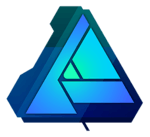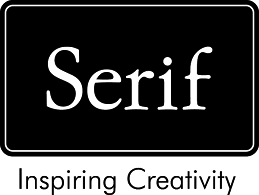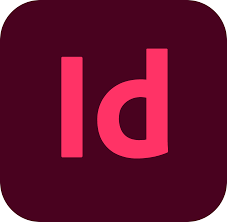Description

Affinity Designer

Nevron
Comprehensive Overview: Affinity Designer vs Nevron
Affinity Designer and Nevron are two distinct products in the realm of graphic design and visualization tools, and each serves different primary functions and target markets. Here's a comprehensive overview of both:
Affinity Designer
a) Primary Functions and Target Markets
Primary Functions:
- Affinity Designer is a vector graphics editor that also offers raster (bitmap) design capabilities. It's known for its robust performance and versatility, allowing users to create detailed illustrations, UI designs, web graphics, print projects, typography, concept art, and more.
- Key features include a flexible design environment, live pixel preview, advanced typography tools, professional output formats, and non-destructive editing.
Target Markets:
- Affinity Designer targets graphic designers, illustrators, artists, and design professionals needing a comprehensive tool for creating both vector and raster artwork.
- It appeals particularly to freelance creatives, small agencies, and startups due to its cost-effective pricing compared to industry standards.
b) Market Share and User Base
- Affinity Designer is a competitive alternative to Adobe Illustrator, with a growing user base especially among those looking for a one-time purchase model instead of a subscription.
- While Adobe Illustrator dominates the market, Affinity Designer is well-regarded and increasingly popular, especially among independent designers and smaller businesses who prioritize ownership over subscription.
c) Key Differentiating Factors
- Pricing: Affinity Designer offers a one-time purchase model, which is a significant draw compared to Adobe’s subscription model.
- Performance: Known for its fast, responsive performance, even on complex projects, due to optimized software engineering.
- Cross-platform: Available on macOS, Windows, and iPad with feature parity across platforms, improving accessibility.
Nevron
a) Primary Functions and Target Markets
Primary Functions:
- Nevron develops a suite of data visualization components for .NET and data mining applications. Their products include chartings like Nevron Chart for .NET, diagramming, and UI components.
- Nevron focuses on delivering advanced and customizable visual data representations for enterprise-grade applications.
Target Markets:
- Developers and organizations that require advanced data visualization solutions.
- Used primarily in enterprise environments where data-heavy applications need clear and effective presentation tools for data.
b) Market Share and User Base
- Nevron occupies a niche within the data visualization component market. Its user base typically consists of enterprise developers and IT departments that require robust charting and diagramming capabilities.
- The market is less saturated compared to graphic design tools, with Nevron holding a solid position among developers for .NET frameworks.
c) Key Differentiating Factors
- Customization and Features: Highly customizable with a wide array of features tailored towards complex data visualization needs.
- Technical Support and Integration: Offers extensive support and seamless integration with Microsoft ecosystems, which is a specific requirement for their target market.
- Focus on Enterprise: Unlike broader market graphic design tools, Nevron caters to business needs for integrating and displaying data effectively in enterprise software.
In summary, Affinity Designer and Nevron cater to different needs within the graphics and data visualization sectors. Affinity Designer focuses on providing a versatile, cost-effective graphic design tool for creatives, while Nevron is a specialized tool for rendering complex data visualizations within enterprise environments. Their differentiation lies in pricing models, target user capabilities, and the specific applications they are designed to enhance.
Contact Info

Year founded :
1987
Not Available
Not Available
United Kingdom
Not Available

Year founded :
1997
Not Available
Not Available
Slovenia
Not Available
Feature Similarity Breakdown: Affinity Designer, Nevron
Affinity Designer and Nevron, a visualization tool primarily known as Nevron Open Vision or Nevron .NET Vision for creating rich graphical interfaces and data visualizations, cater to different aspects of design and visualization but may share common ground in certain features. Here's a breakdown of their feature similarities and differences:
a) Core Features in Common:
-
Vector Graphics Capabilities:
- Both Affinity Designer and Nevron support vector-based design, allowing users to create scalable vector graphics that do not lose quality when resized.
-
Precision Tools:
- Tools for snapping, alignment, and measurements are commonly available, aiding in precise graphic creation and arrangement.
-
Multi-platform Capability:
- While Affinity Designer is popular across various operating systems (macOS, Windows, and iPadOS), Nevron's library is primarily utilized in Windows environments but offers cross-platform components as well for web-based solutions.
-
Export Options:
- Both provide extensive export capabilities, supporting various file formats to ensure compatibility and usability in multiple applications.
b) User Interface Comparison:
- Affinity Designer:
- Known for its modern, intuitive, and sleek UI, Affinity Designer provides a workspace that is highly customizable. It offers persona switching (Vector, Pixel, Export) which allows users to work on different aspects of their design in dedicated environments, ensuring a smooth workflow.
- Nevron:
- The interface is more development-focused, often integrated into development environments like Visual Studio. It's tailored for developing applications with graphical interfaces rather than standalone design software, which may appear less visually oriented compared to Affinity Designer.
Given the distinction in their primary use cases, Affinity Designer prioritizes user-friendliness for graphic design, whereas Nevron integrates more deeply with software development environments.
c) Unique Features:
-
Affinity Designer:
- Personas: Offers different work modes (e.g., Vector, Pixel) for comprehensive graphic design capabilities.
- Real-Time Blend Modes: Provides non-destructive operations with real-time previews.
- Advanced Typography: Includes a variety of typographic features for detailed text manipulation.
-
Nevron:
- Data Visualization Focus: Specializes in rich data visualization tools, such as charts, diagrams, and maps which are not part of Affinity Designer.
- Integration with .NET: Enables easy integration with Microsoft development frameworks, ideal for application developers.
- Custom Widgets and UI Components: Offers extensive customizable components for user interface development.
Conclusion:
While both Affinity Designer and Nevron share some underlying capabilities related to vector graphics, their intended applications diverge significantly—Affinity Designer being more suitable for standalone graphic design work while Nevron excels in complex data visualization and integration within software environments. Unique features of each cater specifically to their core user base: designers and developers, respectively.
Features

Not Available

Not Available
Best Fit Use Cases: Affinity Designer, Nevron
Affinity Designer and Nevron are powerful tools in their respective domains, each catering to different types of projects, businesses, and industry needs. Here's a breakdown of their best-fit use cases and scenarios:
Affinity Designer
a) Best Fit for Businesses or Projects
-
Graphic Design Firms: Affinity Designer is ideal for graphic design firms focusing on vector and raster graphics. Its affordability and broad feature set make it an attractive option for both small and medium enterprises (SMEs) that handle branding, logo creation, and advertising materials.
-
Freelance Designers: Freelancers benefit from the one-time purchase price and the comprehensive tools offered, which support work ranging from illustrations to web graphics, UI/UX design, and more.
-
Creative Agencies: Agencies that require versatile software for various creative projects including marketing collateral, packaging design, and digital art find Affinity Designer to be an adaptable option.
-
Education and Nonprofits: Institutions with tight budgets can leverage Affinity’s cost-effective licensing and rich feature set for educational purposes or for creating promotional materials.
d) Industry Verticals and Company Sizes
-
Industries: Affinity Designer is used across industries such as marketing, digital media, fashion, and publishing. Its robust features cater to creating everything from print to digital assets, suiting industries that require high-quality visual content.
-
Company Sizes: It is particularly popular among small to mid-sized companies due to its competitive pricing compared to other professional graphic design software like Adobe Illustrator.
Nevron
b) Preferred Scenarios
-
Data Visualization and Business Intelligence: Nevron is a powerful choice for scenarios that require advanced data visualization. It is tailored for creating complex charts, dashboards, and diagrams using .NET technologies.
-
Enterprise-level Software Development: Companies developing enterprise software applications, particularly those needing sophisticated data presentations, find Nevron's components essential.
-
IT and Business Analytics Firms: Firms focused on business intelligence, analytics, and IT services use Nevron tools to provide clients with in-depth data representation and visualization capabilities.
d) Industry Verticals and Company Sizes
-
Industries: Nevron serves industry verticals such as finance, healthcare, logistics, and any sector heavily reliant on data analysis and presentation. Its components are crucial for applications requiring detailed and dynamic data interpretation.
-
Company Sizes: Nevron is more suitable for mid to large companies that can leverage its advanced capabilities for developing proprietary tools and solutions. Large enterprises especially value its integration with existing .NET applications and infrastructure.
In summary, Affinity Designer is best suited for creative roles across various industries needing graphic design capabilities without high costs, while Nevron is tailored for enterprise-level data visualization and business intelligence for companies with complex data presentation needs.
Pricing

Pricing Not Available

Pricing Not Available
Metrics History
Metrics History
Comparing undefined across companies
Conclusion & Final Verdict: Affinity Designer vs Nevron
To provide a comprehensive conclusion and final verdict for Affinity Designer and Nevron, considering all factors such as features, pricing, usability, and target audience, one must evaluate these aspects comprehensively:
Overall Value:
Affinity Designer is known for its one-time purchase model, making it a cost-effective choice without the burden of subscription fees. It caters well to both professionals and beginners, offering a rich set of features that might typically be expected in more expensive software.
Nevron, primarily known for its diagramming and data visualization tools, caters to users who require robust data representation and charting capabilities. It is often used in business environments where such visual representations are crucial.
Verdict: For general graphic design purposes, Affinity Designer offers the best overall value given its affordability and extensive feature set tailored for design flexibility. However, for specific data visualization needs, Nevron can be more advantageous.
Pros and Cons:
Affinity Designer:
-
Pros:
- Cost-effective with a one-time purchase fee.
- Comprehensive toolset for vector illustration and graphic design.
- Cross-platform availability (macOS, Windows, iPad).
- Non-destructive operations and dual environment (pixel and vector).
-
Cons:
- Lacks the direct integration with data visualization that Nevron offers.
- Can have a steeper learning curve for complete beginners in design.
Nevron:
-
Pros:
- Specializes in data visualization and diagramming.
- Offers detailed and high-quality charting capabilities.
- Suitable for business and scientific applications requiring rigorous data analysis.
-
Cons:
- Pricing can be higher, especially for enterprise versions.
- Limited functionality for general graphic design compared to Affinity Designer.
Recommendations:
For users trying to decide between Affinity Designer and Nevron, consider your primary needs:
- Choose Affinity Designer if you are involved in graphic design, illustration, or need a cost-effective tool with versatile design capabilities.
- Choose Nevron if your work or project heavily relies on data visualization, charting, or if you're in need of professional-grade representations for business data.
Ultimately, the decision should align with your specific needs. If your work predominantly revolves around creative design and illustration, Affinity Designer's price and capabilities make it an outstanding choice. However, for specialized applications requiring complex data visualization, Nevron is the better fit.
Add to compare
Add similar companies



